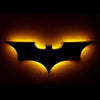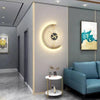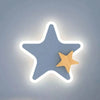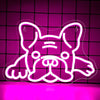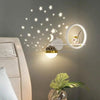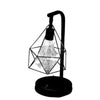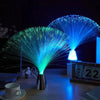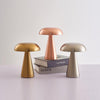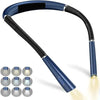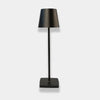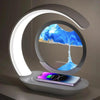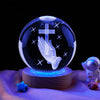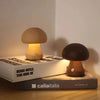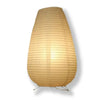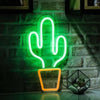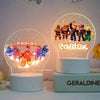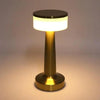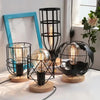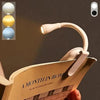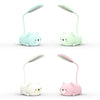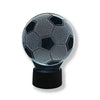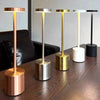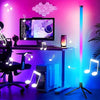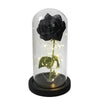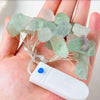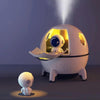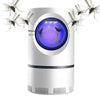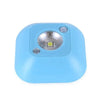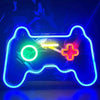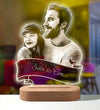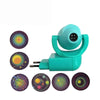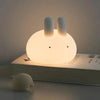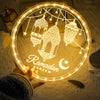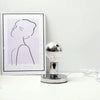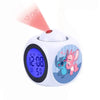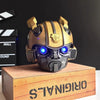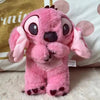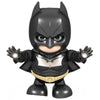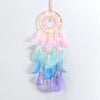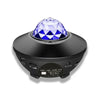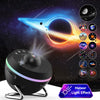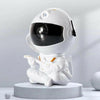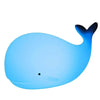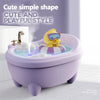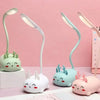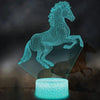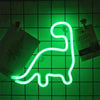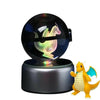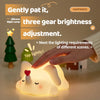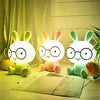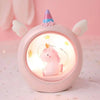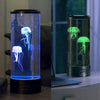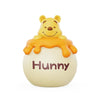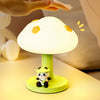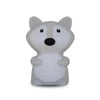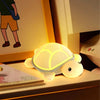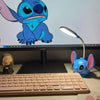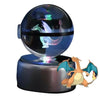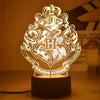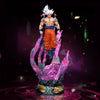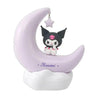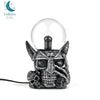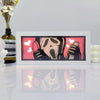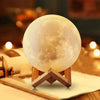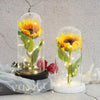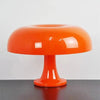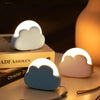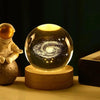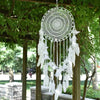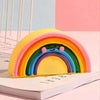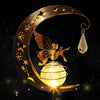Curling up in bed at the end of a long day is a vital part of the relaxation process. The best bedside reading lamps offer features that make this daily ritual a constant pleasure.
A bedside reading lamp is not only a source of light, it is a gateway to relaxation. There are several factors to consider when purchasing, including the presence of storage compartments or charging ports, the material of construction, and the types of bulbs available, in addition to choosing from a wide selection of styles and finishes.
Keep reading to learn more about what you should consider when choosing the best reading bedside lamps for your bedroom, and why the following models are among the best.
What to Consider When Choosing the Best Bedside Reading Lamps
Bedside reading lamps come in a variety of materials, designs, and styles, with price ranges spanning the spectrum to signify quality, capacity, and special features. Consider these factors when purchasing a new bedside reading lamp .
Size
A larger lamp does not necessarily equal more light. When purchasing a new bedside reading lamp , the circumference of the base, height, and size of the bedside table should be considered. Be sure to measure the table before making a new purchase, as larger lamps may leave little or no space for extras such as books or an alarm clock.
Note that tall lamps with thin bases are more likely to be knocked over. Additionally, a tall lamp can project light that disturbs sleeping partners. If this is a potential problem for you, opt for a shorter lamp , with a flexible head for directional lighting, an adjustable shaft, or an extendable arm.
Type Like other varieties of lamps , bedside models come in several types, offering different functions and benefits. Consider the following shapes that suit you:
-
Traditional Reading Bedside Lamps : Featuring a base, shaft, and lamp head finished with an empire-style shade (narrower at the top and flared at the bottom). These models project light above and below the shade, illuminating the surrounding area of the lamp .
-
Swing Arm Lamps : Ideal for tasks requiring focused light, they feature an adjustable arm that swivels into different positions. This design allows users to control the height and downward direction of the light.
-
Adjustable lamps : Unlike swing arm versions, these can be adjusted in different ways. Some have telescoping poles to adjust the height up or down or allow the head to be tilted. The greatest flexibility is found in a gooseneck lamp , which can twist and bend into various configurations.
-
Flares : Contain long, tall stems with flaring heads at the top. They direct light upwards, ideal for adding ambient lighting to a room as well as brightening dark corners.
-
Clip-on lamps : saving space, they do not require the use of a table. As their name suggests, these models attach to headboards or bedside tables using a sturdy clip. These lights are almost exclusively directional lights.
-
Wall lamps , or sconces , are another option for those with limited space next to the bed. These fixtures are wall-mounted and come in a variety of shapes, including traditional, swing-arm, and wallchiere.
-
Free-standing models : are also a general type that encompasses many shapes. These bedside reading lamps have long stems and provide directional or multi-directional light. If you choose a floor lamp , note the easy access to the on/off switch from the bed; the most practical models have a pull rope near the shade or a button along the stem.
- Style and Finish The lamp market has something to complement every style and theme, from pop culture-inspired art pieces to affordable, mass-produced options. Lamp designs incorporate different shapes and visual elements to match popular interior design styles, such as:
- Modern bedside lamps : Clean lines and elegant aesthetics, with elements such as matte finishes, ultra-thin stems, and muted colors. Modern designs are understated to match minimalist home decor.
-
Mid-century modern style bedside lamps : have a retro nostalgia, particularly reminiscent of design styles popular in the 1950s and 1960s. These designs are a blend of minimalism and curvy shapes, such as angled stems, as well as semi-circular and globe lampshades.
-
Industrial Bedside Lamps : Take inspiration from warehouses and urban lofts, with exposed bulbs and all-metal designs. Some include shiny metallic finishes for a modern look, while others have finishes that create a distressed appearance for a vintage industrial aesthetic.
-
Traditional bedside lamps : tend to have rich color palettes and textured fabric shades. Some include distressed-look finishes, and many have vintage-style uppers reminiscent of another era. Their classic stem designs draw attention to this part of the lamp , with shapes such as those that resemble a candlestick or vase.
-
Vintage Bedside Lamps : Often contain antique visual elements with a rugged aesthetic. Evoking forest cabins and old houses, this vintage lamp style focuses on subtle colors and an aged look; Common designs include dark metal with faux tarnished finishes, brown or beige fabric shades, and additional elements shared with traditional lamps .
-
Farmhouse lamp and interior decoration : combine traditional, rustic, and modern elements. Inspired by cottages, country homes, and farmhouses, this style features warm, natural tones, with a softer look compared to rustic designs.
-
Quranic lamp : vary greatly in shape, centered around eclectic and carefree decoration. This can include brightly colored or patterned lampshades, geometric bases, and other unusual shapes.
Bulb Type and Wattage
Wattage is often confused with bulb brightness, but these are distinct. Wattage is a measure of energy consumption; The more watts a bulb supports, the more energy it consumes to produce light. This is an important distinction to keep in mind when considering the main types of bulbs for wall lights: LED , incandescent, and CFL .
-
Light-emitting diode ( LED ) bulbs generate a significant amount of light at a lower wattage, consuming less energy than other types. Compared to incandescent and CFL bulbs, LEDs are more environmentally friendly and energy efficient. LED bulbs have a long lifespan (around 25,000 hours) because less heat is emitted and there is no filament to burn. LED bulbs are more expensive than incandescent and CFL bulbs, but if you use LED fixtures frequently, their value is demonstrated over time.
-
Incandescent bulbs generate light using a bright tungsten filament while expending a lot of energy to produce heat. This makes incandescent bulbs inefficient and ultimately increases your energy bill. Incandescent bulbs are inexpensive to purchase compared to LED bulbs, but once the filament burns out, after a lifespan of approximately 1,000 hours, they are more expensive to replace in the long term than LEDs .
-
Compact fluorescent bulbs ( CFL ) are often a compatible alternative for wall fixtures requiring an incandescent bulb. CFL bulbs last between 10,000 and 15,000 hours and are slightly less expensive than LEDs . CFL bulbs are less energy efficient than LEDs , but more efficient than incandescents.
Based on energy consumption (wattage), lifespan, and value, it's not difficult to see why LED bulbs are favored in modern lighting fixtures. To emit equivalent amounts of light, LED bulbs require lower wattage, CFL bulbs require more watts, and incandescents even more.

Brightness and Color Temperature
Brightness is determined by lumens, a measurement indicating the amount of visible light generated. In other words, the more lumens, the brighter the light. Naturally, task lighting tends to have more lumens to effectively illuminate a target area.
For ambient lighting, choose a bedside reading lamp with at least 400 lumens. If you need light for reading, writing, or performing other tasks, a lamp with between 450 and 850 lumens is ideal - any light brighter than this would probably be overkill for bedside lighting.
The color temperature of bulbs is rated on the Kelvin light scale which ranges from 2000K to 6500K - at the lower end of the scale, warm color temperature contains amber and yellow tones. As the light progresses up the scale, it becomes bright white, then eventually takes on a cool, bluish tint at the upper end.
Keep in mind the following color temperature ranges most suitable for bedrooms: between 2700 and 3000 K provides a warm yellow glow, 3000 to 4000 K gives a yellowish white light, and 4000 to 5000 K creates bright white light.
Loading Devices
Smart devices or e-readers can be found on almost every bedside table. For some, ensuring a full charge for a smartphone is an essential start to the day. Fortunately, there are bedside reading lamps that offer USB charging ports. Traditional sockets are also available when it comes to charging. Some bedside lamps have built-in three-prong plugs for quick and easy charging.
Touch Operation and Dimming
Many bedside lamps offer lighting modes adjustable by touch or mechanical inputs. Different settings are perfect for watching TV, reading while your partner sleeps, or keeping a night light.
The touch lamp collections.

